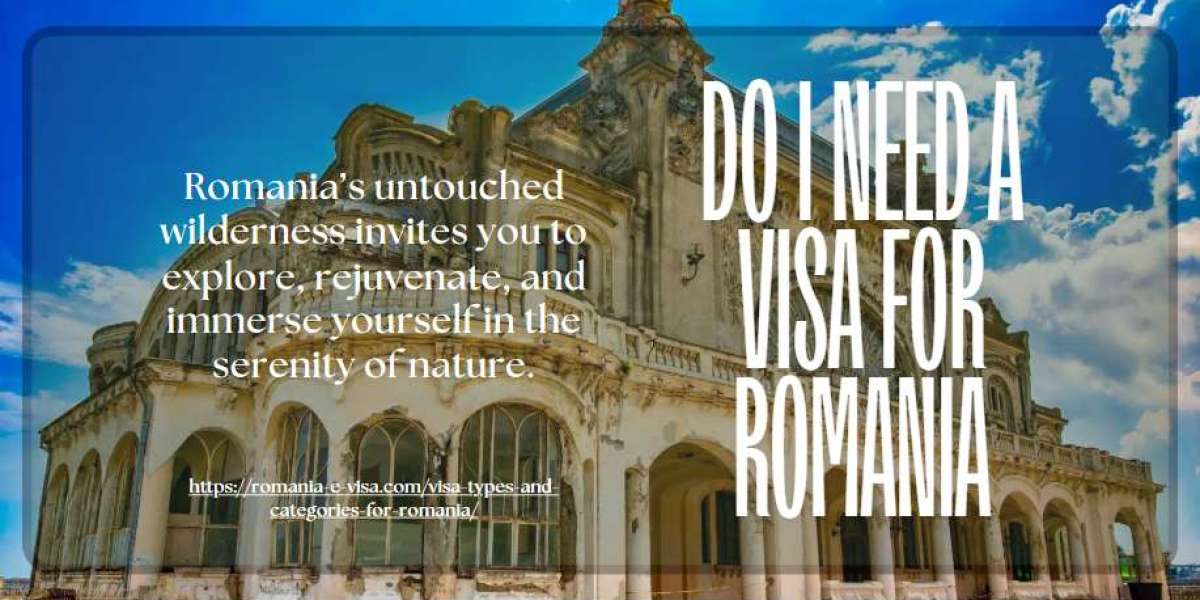Romania is an Eastern European country brimming with beauty, known worldwide for its rolling hills, imperial history, culture, and art. Romania's natural wonders extend to the Danube Delta, a UNESCO World Heritage Site and one of Europe's best-preserved wetlands. Romania is Europe's largest country and the European Union's sixth most populous member state. Its towns and cities are home to an abundance of cultural gems. Romanians have had a distinct appreciation for the arts since ancient times, including paintings, plastic arts, architecture, textiles, and ceramics. Romania's beauty lies not only in its landscapes and landmarks but also in its traditions and hospitality. Visitors can immerse themselves in vibrant festivals, savor hearty local cuisine. Whether you're looking for adventure, history, or tranquility, Romania's diverse charm promises an unforgettable trip.
To know it more clearly, we should first know which visa we need and how to fulfill its requirement, so let us know.
What is difference between Schengen visa and Romania visa
Whenever we have to travel to a country, the most important thing we need is a visa, which depends on the reason for our trip, the place of stay and the country we are from. People apply it for reasons such as tourism, business, cultural, relatives or studies. Recently Romania is going to join the Schengen area which will be announced by the end of this year 2024 december. The Schengen area is an area of 26 European countries that have agreed to eliminate border controls between themselves. The Schengen area is part of the EU's freedom, security and justice policy. It means citizens will be able to travel between Romania and other Schengen member countries without a passport. Now the most important question is do I need a visa for Romania? And if yes, which one. It is necessary to understand whether you need a Schengen visa or a Romanian visa to enter Romania
What is a Romania Visa?
Romania is not part of the Schengen Area, even though it is a member of the European Union. Therefore, a Schengen Visa does not automatically grant you access to Romania. If Romania is your primary destination, or if you’re planning an extended stay in the country, you may need a Romanian visa.
Romania offers several types of visas based on your purpose of travel, such as:
Tourist visa (Type C): Romania allows short stays up to 90 days within 180 days. It’s ideal for leisure travel, requiring an application, valid passport, and supporting documents.
Long-stay visa (Type D): Romania allows individuals to stay longer than 90 days for purposes like work, study, family reunification, or business, subject to specific requirements.
What is a Schengen Visa?
The Schengen Visa is a short-stay visa that allows travelers to move freely within the 26 countries of the Schengen Area. These countries have abolished internal border controls, making it one of the most seamless travel regions in the world.
With a Schengen Visa, you can travel to popular destinations like France, Germany, Italy, Spain, and more, for up to 90 days within a 180-day period. It’s perfect for multi-country European trips.
Key Differences Between the Two Visas
Romania Visa
Coverage : Romania only
Purpose : Short and long stays (varied purposes)
Validity: Depends on the visa type
Entry to Romania : Required if no Schengen Visa is valid
Schengen Visa
Coverage : 26 Schengen countries
Purpose : Short stays (tourism, business, transit)
Validity : Up to 90 days in a 180-day period
Entry to Romania : Allowed with valid Schengen Visa (specific conditions)
Which Visa Should You Apply For?
Apply for a Schengen Visa if you plan to visit multiple European countries in the Schengen Area and include Romania as a secondary destination.
Apply for a Romania Visa if Romania is your primary destination or if your trip does not involve any Schengen countries.
Making hassle-free travel plans makes it essential to understand the difference between a Schengen visa and a Romania visa. While the Schengen visa provides wider access to many European countries, the Romania visa is specifically for those whose travel plans revolve around this culturally rich and diverse country. Always check the latest visa policies before booking your trip, as requirements may vary depending on your nationality and purpose of travel.
What to explore After Arrival in Romania
As you now know, Romania is a gem of Eastern Europe, a blend of history, nature, culture. Some beautiful places in Romania that make travelers feel like a world away, whether you are stepping into its cities or its countryside, there is so much to explore. Here are some places and experiences you must visit:
1. Bucharest – The Little Paris of the East
Start your Romanian journey in the capital city.
Palace of the Parliament: The second-largest administrative building in the world, a must-see for its grandeur and history.
Old Town (Lipscani): Wander through charming cobblestone streets filled with cafes, restaurants, and nightlife.
Village Museum: Get a taste of traditional Romanian rural life with this outdoor museum showcasing authentic houses and artifacts.
2. Transylvania’s Castles and Fortresses
Bran Castle (Dracula’s Castle): Explore the legendary castle often associated with Vlad the Impaler.
Peleș Castle: A Neo-Renaissance masterpiece nestled in the Carpathian Mountains, perfect for photography enthusiasts.
Rasnov Fortress: A medieval hilltop stronghold offering panoramic views.
3. Medieval Towns
Brașov: Discover the Black Church, walk around Council Square, and ride the cable car to Mount Tampa for incredible views.
Sibiu: Known for its Gothic architecture and the iconic "eye" windows of its old houses.
Sighișoara: The birthplace of Vlad the Impaler and a UNESCO World Heritage site.
4. The Carpathian Mountains
Nature lovers can explore hiking trails, ski resorts, and wildlife in:
Piatra Craiului National Park
Bucegi Mountains
Transfăgărășan Road: One of the most scenic drives in the world, open during the summer.
Best part of Romania for visitors
Here are some places and their names for you to explore Romania which will make it easier for you to travel around Romania.
Castles & Fortresses
Bran Castle: Often associated with Dracula, this iconic castle is surrounded by mystery.
Peleș Castle: A Neo-Renaissance masterpiece nestled in the Carpathian Mountains.
Corvin Castle: A Gothic fortress straight out of a fairytale.
Breathtaking Nature
Transfăgărășan Road: A spectacular drive through the Carpathians.
Danube Delta: A UNESCO World Heritage site teeming with wildlife.
Bușteni’s Cantacuzino Castle View: Surrounded by majestic peaks.
Charming Cities and Town
Constanța: A seaside city with ancient ruins.
Iași: Known for its rich literary and cultural heritage.
Oradea: Famous for its Art Nouveau architecture.
Which months tourist visit in Romania
Tourists visit Romania year-round, but peak months are May to September for warm weather and attractions like Transylvania and the Danube Delta. Winter months, December to February, draw visitors to ski resorts like Poiana Brașov and festive Christmas markets. Spring and autumn offer fewer crowds and stunning natural scenery.
Conclusion
To explore Romania, travelers typically need a tourist visa, depending on their nationality. EU citizens can enter visa-free, while others may require a short-stay Schengen visa. Always check Romania's official visa requirements for your country before traveling. Proper documentation ensures a hassle-free experience while discovering Romania's rich history and scenic beauty.








